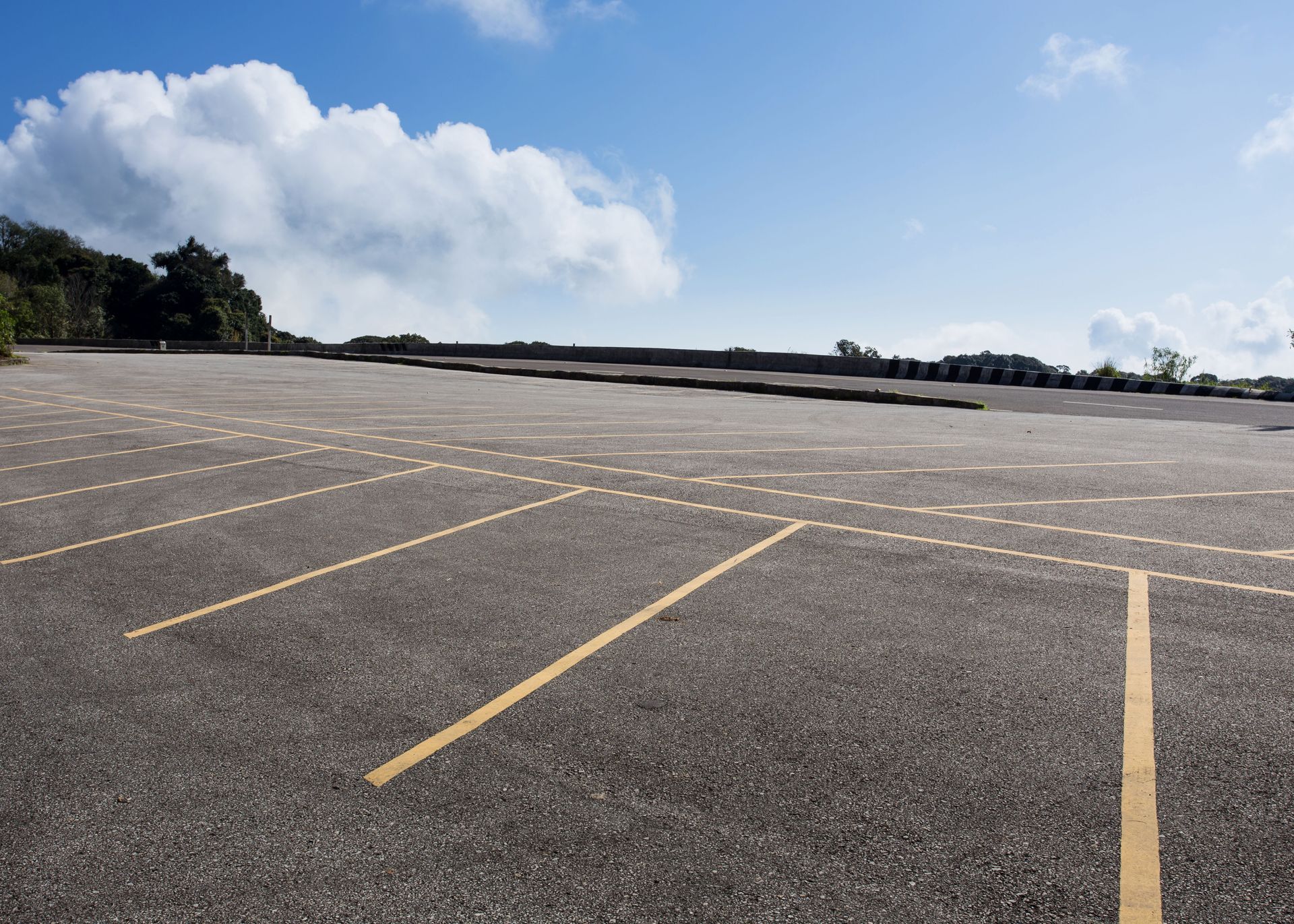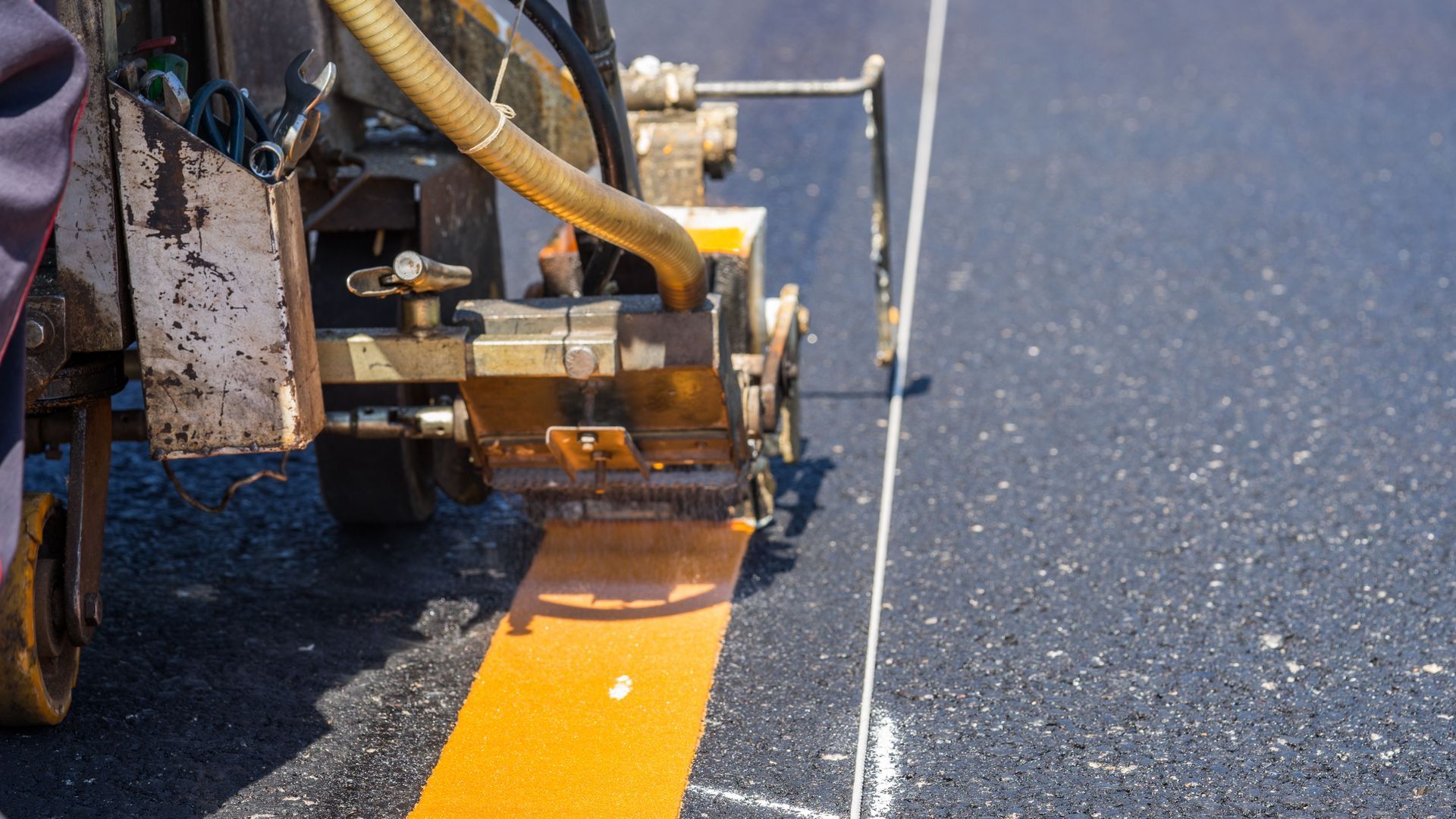How to Prepare Your Lot Before Line Stripers Arrive
Keeping a parking lot in good condition is about more than just aesthetics — it's an important part of safety, organization, and accessibility. Freshly painted lines help drivers move smoothly, reduce accidents, and make the space look clean and professional. But to achieve those results, property owners need to do more than simply schedule a painting day. Preparing the lot before the line stripers arrive is a crucial step that can affect the quality, durability, and accuracy of the final result.
Many businesses overlook how much proper preparation matters. Even the most skilled line striping company can't produce a flawless finish if the surface is dirty, damaged, or disorganized. Whether you're repainting faded markings or laying out a new design, taking the time to get the lot ready ensures the job is completed quickly and effectively.
Clear the Parking Area of All Vehicles and Obstacles
The first and most obvious step is to make sure the parking lot is completely clear. Cars, delivery trucks, dumpsters, and any temporary structures should be removed before the line stripers arrive. This may seem like a simple task, but it often requires coordination with employees, customers, or tenants to avoid disruption.
If possible, notify everyone who uses the lot at least a few days in advance. Post signs or send reminders to prevent vehicles from being parked during the scheduled work. The clearer the space is, the easier it will be for the crew to access every area without delays. A clear lot also allows for more precise measurements and straighter, sharper lines.
Thoroughly Clean the Surface
Even if your parking lot looks relatively clean, it's likely covered with dirt, oil, leaves, and other debris that can interfere with the paint's ability to adhere properly. Cleaning the surface is one of the most important steps before the line striping company arrives. Start by sweeping the entire area to remove loose materials, then consider pressure washing to get rid of stubborn stains or oil spots.
Oil and grease are especially problematic because paint won't bond effectively to those surfaces. Using a degreaser on heavily stained areas can help create a better surface for paint application. Cleaning not only improves the look of the finished lot but also extends the life of the paint.
Inspect and Repair Pavement Damage
Line stripers can create clean, crisp markings, but if the pavement beneath is cracked, uneven, or crumbling, the final result will suffer. Before painting, thoroughly inspect the entire lot for potholes, surface cracks, and damaged areas. If necessary, patch holes and seal cracks to create a smooth, even surface.
Paint applied over damaged pavement is more likely to chip, peel, or wear away quickly. Taking care of these issues before the striping crew arrives ensures the paint will adhere better and last longer. It also creates a safer environment for pedestrians and vehicles.
Finalize the Parking Lot Layout and Design
Before the line stripers begin painting, you need to decide exactly where each line, space, and symbol will go. This is particularly important if you're changing the layout, adding ADA-compliant spaces, or reconfiguring traffic flow. Even if the design will remain the same, reviewing and marking the layout ahead of time can help avoid mistakes on the day of painting.
Use chalk, string, or temporary markers to outline the placement of parking spaces, arrows, crosswalks, and loading zones. This pre-planning ensures that the finished lines will be both functional and compliant with local regulations. Having a clear plan also helps the striping crew work more efficiently, saving time and reducing the risk of errors.
Address Drainage and Standing Water Issues
Standing water or poor drainage can significantly affect the quality of the striping work. If water collects in low spots or pools on the surface, it can dilute the paint, prevent proper drying, or even wash away freshly applied lines. Before the line striping company arrives, walk through the lot after rainfall or run water over the surface to identify any drainage problems.
If you find areas with pooling water, consider repairing the grading or adding drainage solutions to prevent future issues. Proper drainage not only improves paint adhesion but also helps preserve the pavement itself, reducing long-term maintenance costs.
Clearly Mark Curbs, Fire Lanes, and Utility Access Points
Line stripers focus on painting standard lines and markings, but they also rely on property owners to clearly identify areas that should not be painted. These often include fire lanes, curbs, utility covers, and drainage grates. If these areas are not clearly marked, they may accidentally be painted over, creating compliance issues or requiring rework.
Use bright tape, cones, or signage to highlight no-paint areas before the crew arrives. This step minimizes confusion and keeps the project on schedule. It's also a good opportunity to double-check that all designated spaces, such as accessible parking or loading zones, are properly identified and marked.
Plan for Weather and Scheduling
Weather can make or break a striping project. Since paint requires dry, mild conditions to adhere and cure correctly, scheduling the work for a day with clear skies and moderate temperatures is essential. If rain, extreme heat, or high humidity is expected, it's better to reschedule than risk a poor finish.
It's also wise to plan the work during off-peak hours to minimize disruption. Early mornings, evenings, or weekends are often ideal times for commercial properties. By carefully planning around weather and usage patterns, you can help the line striping company complete the job quickly and without complications.
Communicate Special Instructions or Requirements
Before the line stripers begin their work, take time to go over any specific instructions, preferences, or requirements you may have. This might include custom signage, non-standard paint colors, unique traffic patterns, or designated pedestrian zones. The more information the crew has in advance, the more accurate and efficient the project will be.
Clear communication also helps prevent misunderstandings and eliminates the need for costly corrections later. Even small details, like the thickness of the lines or the location of directional arrows, can affect the functionality of your lot. A pre-project walk-through with the striping team can ensure everyone is on the same page before painting begins.
Understand the Long-Term Value of Proper Preparation
It's worth remembering that proper preparation isn't just about making the job easier for the line striping company; it's an investment in the long-term quality and safety of your parking lot. According to Towne Park, the United States has over two billion parking spaces for about 250 million vehicles. This is more than six parking spaces for every registered car in the country. In a landscape where parking availability and organization are critical, a well-maintained and clearly marked lot can make a property stand out.
Fresh, precise striping improves traffic flow, reduces liability risks, and enhances the overall customer experience. On the other hand, skipping key preparation steps can lead to uneven lines, premature fading, and costly rework. By viewing preparation as part of the process rather than an optional task, property owners can maximize the value of their investment.
A well-prepared lot not only looks better but also functions more safely and efficiently. If you're ready to refresh your parking area and want results that last, trust the line stripers at Hexagon Striping to deliver the high-quality service your property deserves.




Share On: